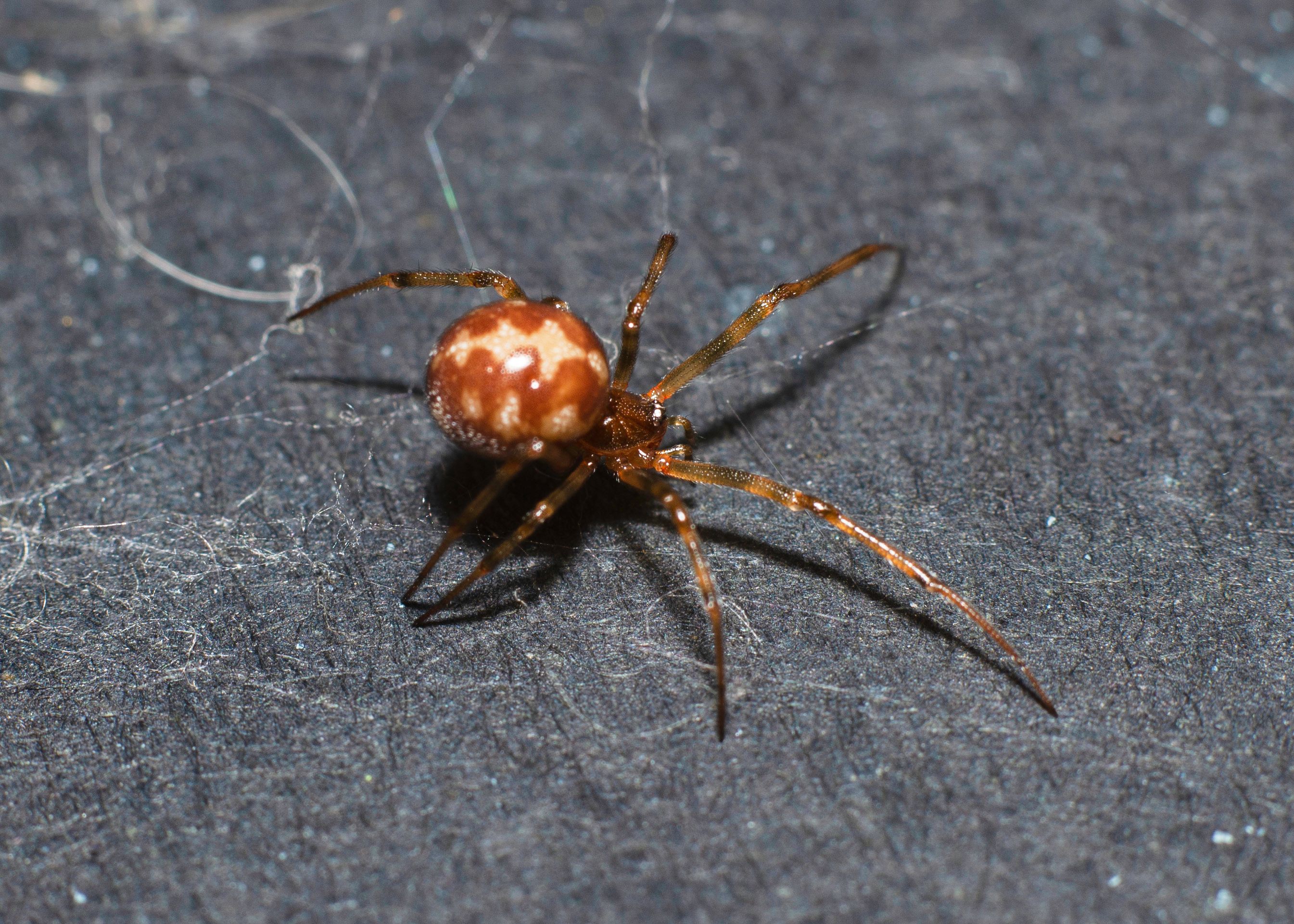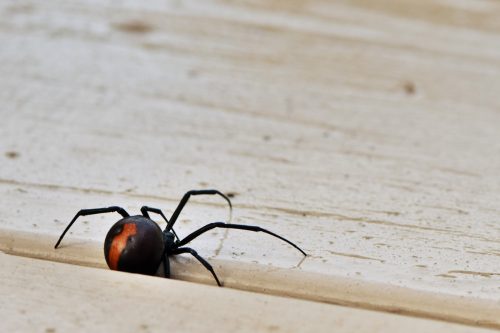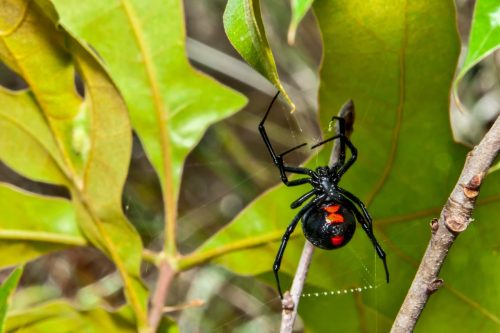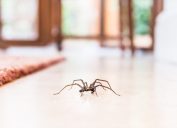Black Widow Spiders May Go Extinct—But Venomous Brown Widows Are on the Rise
The more aggressive species attacks—and eats—their shy cousins.

Black widow: The very thought of the half-inch-long spider's shiny, bulbous body that bears a telltale crimson hourglass pattern strikes fear into the hearts of arachnophobes—and anyone with an attic or woodshed. Latrodectus mactans is known as the deadliest spider in North America—but they're disappearing. According to a new study, the native American species is being threatened by the young upstarts of a closely related species, the brown widow (Latrodectus geometricus).
Brown widows—also venomous, but less so—presumably arrived in the southern U.S. from South Africa in the 1930s. In some suburban and urban areas, their numbers are growing, while their cousins are becoming scarce. Are brown widows taking over by force? Read on to hear from the experts.
READ THIS NEXT: If You Notice This in Your Yard, Watch Out for Venomous Spiders.
Black widows are venomous but shy.

Black widows are dreaded due to their venomous bite, but also because of their fondness for living in close proximity to humans in sheds and corners of the house.
Though their venom is 15 times stronger than rattlesnake venom, according to Smithsonian magazine, their small size means that, though it may be very painful, their bite is only a real risk to very young and elderly people. They're reclusive creatures, and won't bite unless actively disturbed.
Brown widows have thousands of babies.

The closely-related brown widow is smaller than its black-and-crimson cousin, with a distinctive orange or yellow hourglass marking on its abdomen and geometric markings on its back and sides.
According to Entomology Today, a female brown widow spider can produce an average of 22 egg sacs—with up to 282 eggs per sac—on average throughout her lifetime, and one egg sac every four days at the start of her reproductive life. This adds up to thousands of spiderlings.
Like black widows, brown widows often choose to live around people. Brown widows are less venomous than their native cousins, but they aren't at all shy.
READ THIS NEXT: If You Live Here, Watch Out for This Poisonous Spider in Your Home.
Brown widows are much more aggressive, especially when they're young.

Young brown widows have been found to be extremely aggressive toward black widows, attacking and eating them with little or no provocation.
According to the New York Times, the aforementioned recent study, published in the Annals of the Entomological Society of America, shows that "young brown widow spiders have a dramatic tendency to seek out and kill their American cousins."
The study reveals that, over several decades, black widows have been disappearing, with their brown relatives growing in population until they were found to outnumber black widows 20-to-one in some areas of the U.S. The writers of the study noted that whenever the two species overlapped, the black widows eventually disappeared.
Black widows don't fight back, and they pay the price.

According to Charles van Rees, conservation scientist and editor-in-chief of Gulo in Nature, the case of the brown and black widows is "a textbook example of competitive interactions from invasive species."
"In other words, while some invasive species cause environmental harm by acting as a predator toward a species that has no defenses, others cause harm by competing with their native counterpart," van Rees explains. "Generally speaking, the more closely related two species are, the more likely they are to have similar lifestyles and to occupy similar niches."
The problem, says van Rees, is that the non-native brown widows have some advantages over the black widows: They are able to produce about twice as many young every time they reproduce, and those young are far more aggressive and will challenge nearby spiders and attack ones that don't defend themselves.
Since black widows are relatively non-aggressive, they fall victim to this aggression. When they occupy the same living spaces, the brown widows will typically kill or drive off the black widows.
For more pest advice delivered straight to your inbox, sign up for our daily newsletter.
The more aggressive species is taking over, but there may be a solution.

Observation of the two species in various locations yields the same result: The shy black widows often retreat, but their brown cousins attack relentlessly.
In the American south and west, black widows are in danger of losing ground in urban and suburban areas, where brown widows are beginning to outnumber them.
So, will black widows become extinct? According to Van Rees, though they have already disappeared from certain areas, scientists think that the black widow's greater preference for drier climates and willingness to live in rural areas might keep some of them out of reach of the aggressive invaders.
Van Rees calls this a new example of "niche partitioning, when two species are able to co-exist because they manage to occupy slightly different niches."
This niche partitioning could be a silver lining for the bullied and beleaguered black widow population, as they can live in deserts and woodlands, where their brown cousins aren't as likely to follow them. When the brown widows take over your neighborhood's attics and cubby holes, their cousins may well pack up and head for the hills.





















